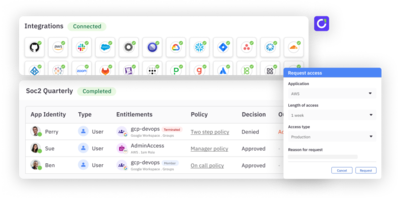AI agents will multiply at an unprecedented rate. But while companies have spent decades refining identity governance for human employees, the AI agent identity problem remains largely unsolved. These agents require access to data, systems, and applications, just like human users, but with very different life cycles, permissions, and security risks.
The reality is that AI agents must be governed like any other identity—but with new technologies and approaches purpose-built for their unique nature.
AI agents log in, request data, make changes, and act on behalf of users. But their fundamental differences from human users make traditional identity management approaches insufficient. AI agents:
- Are often ephemeral, existing only for minutes or seconds.
- Need role-based or task-based access, not broad permissions.
- Can be highly autonomous, making real-time decisions without human approval.
- Must interact securely with other AI agents, creating new governance challenges.
Why Traditional Identity Systems Don’t Work
Most enterprise identity and access management (IAM) systems were built around human-centric models. A new employee gets onboarded, receives permissions over time, and follows a predictable lifecycle. AI agents break these assumptions:
- Ephemeral identities: A human employee may stay with a company for years, while an AI agent might exist for a single task.
- Dynamic access needs: AI agents may require specific, temporary permissions that change based on context.
- No human-in-the-loop: AI agents operate at machine speed, meaning manual approvals for access requests aren’t feasible.
AI-Native IAM: The Future
Organizations must rethink identity governance to address the AI identity problem. This means adopting new models that allow AI agents to securely access systems while maintaining oversight and control. The key requirements include:
1. Ephemeral Credentialing
Many AI agents today use unsafe practices—like storing login credentials in plain text prompts. This is a security nightmare. Instead, organizations need:
- Short-lived, one-time credentials that expire immediately after use.
- Authentication models that verify AI agents dynamically rather than relying on static passwords or API keys.
2. Task-Based Authorization
Traditional role-based access control (RBAC) won’t work at AI scale. Instead, organizations should implement:
- Task-based permissions that grant access only for specific actions.
- Context-aware policies that adjust permissions in real time.
- AI agents evaluating other AI agents’ access requests to ensure security at machine speed.
3. AI-Native Identity Providers
Just as cloud adoption required a new class of security tools, the rise of AI agents demands a new kind of identity system:
- An identity provider (IDP) designed for AI agents, allowing dynamic provisioning and deprovisioning.
- Standardized AI authentication claims to ensure interoperability across platforms.
- Integration with model context protocols (MCPs), enabling AI agents to securely communicate with enterprise applications.
The Path Forward
AI-driven identity is not a future problem—it’s happening now. Organizations need to act fast to:
- Build AI-native identity governance frameworks before agents become unmanageable.
- Implement secure authentication and authorization models that don’t rely on outdated human-centric methods.
- Develop policies that limit agent access to only what’s necessary while maintaining an audit trail.
The AI identity wave is a fundamental shift in how we think about identity itself. The legacy models we’ve relied on for decades weren’t built for a world where millions of autonomous agents act, decide, and interact at machine speed. It’s time to throw out the old paradigms. We need to reimagine identity governance—built not for people, but for a future powered by intelligent, ephemeral, and interconnected AI agents.
At ConductorOne, we’ve already built world-class identity governance solutions trusted by some of the largest enterprises in the world. But we’re not stopping there. We’re actively designing the next generation of identity solutions—ones that will help our customers cross the chasm from traditional IAM to AI-native identity governance at scale.
We’re excited to help define what’s next. Let’s build it together.





